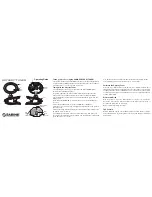
PAGE 19
same time.
An antenna tuner is a device used to
cancel out the effects of antenna
reactance. Tuners add capacitance to
cancel out inductive reactance in the
antenna, and vice versa. Simple tuners
use variable capacitors and inductors;
the operator adjusts them by hand while
observing reflected power on the SWR
meter until a minimum SWR is reached.
The LDG Electronics AT-897Plus
automates this process.
No tuner will fix a bad antenna. If
the antenna is far from resonance, the
inefficiencies inherent in such operation
are inescapable; it’s simple physics.
Much of the transmitted power may be
dissipated in the tuner as heat, never
reaching the antenna at all. A tuner
simply “fools” the transmitter into
behaving as though the antenna were
resonant, avoiding any damage that
might otherwise be caused by high
reflected power. For best performance,
the antenna used should always be as
close to resonance as is practical.
THE LDG AT-897PLUS
In 1995, LDG Electronics pioneered a new type of automatic antenna tuner. The LDG design
uses banks of fixed capacitors and inductors, switched in and out of the circuit by relays under
microprocessor control. An additional relay switches between high and low impedance ranges. A
built-in SWR sensor provides feedback; the microprocessor searches the capacitor and inductor
banks, seeking the lowest possible SWR. The tuner is a “Switched L” network, consisting of
series inductors and parallel capacitors. LDG chose the L network for its minimum number of
parts and its ability to tune unbalanced loads, such as coax- fed dipoles, verticals, Yagis, and
virtually any coax-fed antenna.
The series inductors are switched in and out of the circuit, and the parallel capacitors are
switched to ground under microprocessor control. The high/low impedance relay switches the
capacitor bank either to the transmitter side of the inductor bank, or to the antenna side. This
allows the AT-897Plus to handle loads that are either greater than or less than 50 ohms. All
relays are sized to carry 125 watts continuously.
The SWR sensor is a variation of the Bruene circuit. This SWR measuring technique is used
in most dual- meter and direct-reading SWR meters. Slight modifications were made to the circuit
to provide voltages instead of currents for the analog-to-digital converters that provide signals
proportional to the forward and reflected power levels. The single-lead primary through the
center of the sensor transformer provides RF current sampling. Diodes rectify the sample and



































